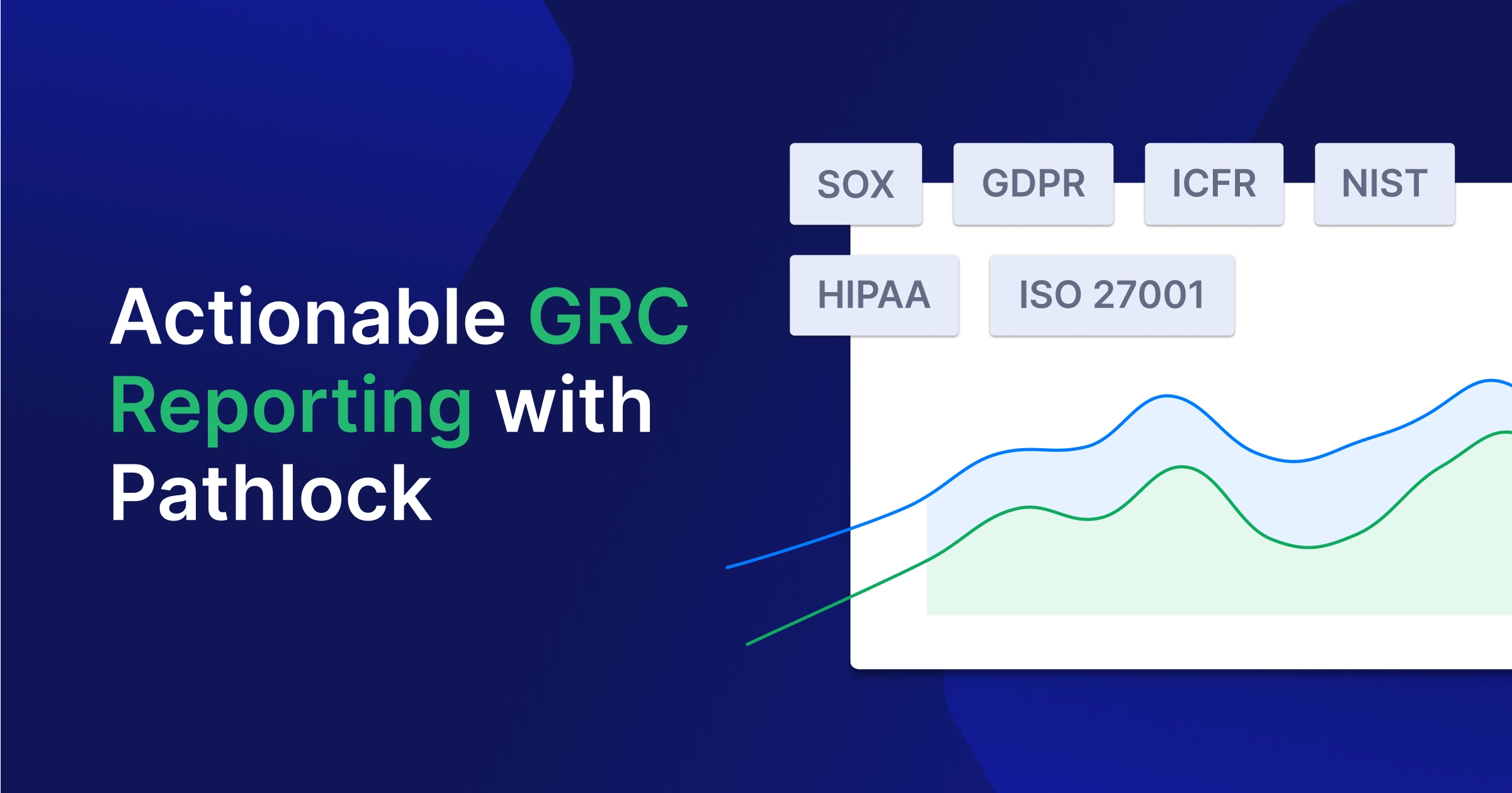Let’s face it. No one likes to see red in their compliance reports. However, achieving 100% compliance is almost impossible in today’s fast-paced and highly regulated business environment. As organizations navigate a complex web of laws, regulations, and industry standards, the ability to effectively monitor compliance can mean the difference between success and costly setbacks. Compliance monitoring is not just a bureaucratic necessity; it is a strategic tool that helps businesses identify potential risks, ensure adherence to legal and ethical standards, and continually improve their policies and processes.
The good news is that compliance monitoring has evolved significantly over the years thanks to the advent of advanced technology. Automation, artificial intelligence, and data analytics have transformed traditional, time-consuming compliance processes, making them more efficient and accurate. These technologies enable organizations to monitor compliance in real time, quickly identify discrepancies, and implement corrective actions before issues escalate.
In this post, we’ll dive into the many benefits of compliance monitoring and how technology can make this crucial process easier. We’ll also offer tips on crafting an effective compliance monitoring plan and share best practices to help your organization stay compliant and resilient amid regulatory challenges.
What Is Compliance Monitoring?
Compliance monitoring is a systematic approach to ensuring an organization meets established guidelines and standards. These may include internal policies, procedures, or external legal requirements. Organizations detect deviations by regularly reviewing activities and taking prompt corrective action.
The Importance of Compliance Monitoring
Compliance monitoring plays a crucial role for businesses beyond merely fulfilling legal obligations. It affects three key areas: reducing legal and financial risks, maintaining regulatory compliance, and fostering trust and reputation.
Mitigating Legal and Financial Risks
Failure to comply with regulatory standards can lead to legal issues and financial losses. But it’s not just about avoiding fines and penalties. Indirect costs, such as operational disruptions and reputational damage, can also impact your profitability.
Regular assessments of business operations against established rules help identify risk areas. This early detection allows for quick intervention, preventing minor issues from escalating.
Ensuring Regulatory Compliance
Businesses face a myriad of regulations, laws, and standards. These can vary across industries and locations. Compliance monitoring consistently evaluates your operations against these standards, keeping your organization within legal boundaries. This includes areas like employment practices, data protection, environmental standards, and anti-corruption laws.
Building Trust and Reputation
Trust is a valuable asset for any business. Stakeholders, including customers, employees, suppliers, and investors, value organizations that demonstrate ethical practices.
Consistent compliance monitoring shows your commitment to ethical practices and transparency. Over time, this builds a positive reputation and earns stakeholder trust.
- Reducing legal and financial risks: Compliance monitoring identifies risks early, allowing for quick intervention and minimizing legal and financial losses.
- Maintaining regulatory compliance: Compliance monitoring keeps your organization within legal boundaries, avoiding penalties and disruptions.
- Fostering trust and reputation: Consistent compliance monitoring builds a positive reputation and earns stakeholder trust.
Implementing Technology in Compliance Monitoring
With technological advancements infiltrating every business operation, compliance monitoring is no exception. Cutting-edge tools have reshaped the way firms manage compliance, streamlining the process of adapting to regulatory changes, pinpointing risks, and swiftly executing remedial actions.
Risk Identification
The absence of diligent risk identification could result in overlooking crucial areas, leading to legal complications or financial repercussions. Fortunately, advancements in technology have equipped businesses with sophisticated algorithms and machine learning for accurate and efficient risk identification. These tools scrutinize a broad spectrum of data for patterns and anomalies that might signal potential risks, enabling companies to address them before they turn into substantial issues.
Automation tools
Staying updated with regulatory changes and ensuring adherence can be a daunting task, especially for businesses operating in highly regulated industries. Here, automation tools come to the rescue by monitoring compliance without the need for constant manual supervision. These tools automate mundane tasks like data collection and report generation, minimizing human errors and saving time. Furthermore, they provide real-time updates on compliance status, allowing businesses to respond immediately when required.
Data analytics
Data analysis is instrumental in helping organizations decipher the large amounts of data they accumulate. It reveals trends, patterns, and correlations that might otherwise go unnoticed. By using a comprehensive data analysis platform, companies can spot trends in compliance and non-compliance, pinpointing areas of vulnerability that require attention. It also helps forecast future compliance issues, enabling companies to proactively devise strategies to manage these risks.
Real-time monitoring
Real-time monitoring has revolutionized the way companies manage compliance. It provides a constant, up-to-date view of their compliance status, a feat not achievable with traditional, periodic audits. With real-time monitoring tools, companies can receive instant alerts about a potential compliance issue, empowering them to take immediate corrective action. Plus, real-time monitoring facilitates detailed oversight of compliance, tracking it at the level of individual transactions or activities.
While technology plays a pivotal role in compliance monitoring, it doesn’t completely replace human intervention. It should serve as a valuable aid in managing routine tasks and providing insightful data while the human team concentrates on decision-making and strategic planning. A successful compliance monitoring program combines the strengths of advanced technology and human intuition.
Creating an Effective Compliance Monitoring Plan
Creating a robust compliance monitoring plan safeguards your organization’s adherence to all regulatory requirements. The steps below provide the foundation for this important plan.
Conduct A Thorough Risk Assessment
The cornerstone of an effective compliance monitoring plan is understanding the risks your organization faces. This understanding stems from a thorough risk assessment, identifying potential sources of risk, assessing their impact, and determining their likelihood. These findings set the stage for your compliance priorities and strategies. A continuous approach to risk assessment ensures your compliance plan stays relevant to changing conditions.
Prioritize High-risk Areas
Identifying potential risks is crucial to prioritizing them based on their severity and impact. Focusing on high-risk areas ensures effective resource allocation and timely compliance issues. This strategy helps prevent major disruptions and penalties from non-compliance while streamlining compliance efforts by avoiding unnecessary focus on low-risk areas.
Establish Clear Compliance Policies
Well-defined compliance policies act as a roadmap for employees, outlining expected conduct and operations. These policies should detail your organization’s commitment to regulatory requirements and ethical standards, clarify what constitutes non-compliance, and the repercussions of such actions. Regularly updating these policies ensures they remain relevant amidst changing regulations and operations.
Provide Comprehensive Employee Training
Employee training on compliance policies is essential. Comprehensive, engaging, and interactive training makes sure your team understands the importance of compliance and their role in maintaining it. Regular refresher sessions and special training for new policies or regulation changes reinforce this understanding.
Develop Ongoing Monitoring Procedures
Consistent monitoring underpins compliance maintenance. Establish procedures to evaluate your organization’s adherence to compliance policies and regulatory requirements. Use automated tools for real-time monitoring and risk detection to enhance your monitoring process’s effectiveness.
Implement Corrective and Preventive Measures
Non-compliance incidents may occur despite your best efforts. In these cases, immediate corrective actions are necessary to resolve the issue. Additionally, preventive measures should be put in place to prevent recurrence. Analyzing each non-compliance incident to identify its root cause and taking steps to address it improves your compliance performance over time.
Regularly Update and Review Compliance Plans
Regulations and conditions change. For your compliance monitoring plan to remain effective, it must be reviewed and updated regularly. An up-to-date compliance plan aligns with regulatory changes, shifting goals, and emerging risks. A plan that lags behind can lead to overlooked risks and regulatory breaches.
Building a strong compliance monitoring plan is an ongoing process that demands constant attention and adjustment. By following these steps, you can create a plan that promotes transparency, reduces risks, and fosters trust among stakeholders.
Best Practices for Compliance Monitoring
Refining your compliance monitoring plan involves adopting effective strategies. These methods can bolster your compliance program, making it resilient and adaptable to changing regulations.
Perform Detailed Internal Audits
Performing thorough internal audits is crucial for maintaining compliance in your organization. These audits scrutinize your organization’s activities and processes to ensure they meet established rules and regulations. They highlight areas of non-compliance needing immediate attention. Regular audits enable your organization to maintain compliance proactively rather than simply reacting to issues.
Integrate Advanced Automation Tools
Compliance monitoring can be tedious when done manually. Advanced automation tools streamline this process by handling routine tasks such as data collection and report generation. They can swiftly and accurately analyze large data sets, identify potential risks, and provide real-time compliance status updates. Incorporating these tools into your compliance program ensures accuracy, efficiency, and consistency.
Cultivate A Compliance-focused Culture
Your compliance monitoring success largely hinges on your organization’s culture. Fostering a compliance-driven culture involves promoting transparency, encouraging ethical behavior, and creating an environment where employees take responsibility for compliance. This positive culture motivates employees to adhere to compliance regulations. Regular training sessions and communications can reinforce this culture within your organization.
Define Clear Roles and Accountability
Clear roles and accountability are vital in compliance. Every team member should understand their responsibilities in maintaining compliance and the consequences of non-compliance. This understanding streamlines the compliance process and reduces the risk of missing crucial tasks. Documenting these roles and responsibilities offers a reference for employees and reduces confusion.
Utilize Comprehensive Data Analytics
Data analytics is essential in modern compliance monitoring. This process detects recurring motifs and shifts in adherence data, exposing weak points and predicting potential threats. By leveraging a thorough data analytics tool, your company can proactively tackle these risks, thereby enhancing its compliance effectiveness.
Stay Updated with Regulatory Changes
Regulations often change, and keeping up with these changes is crucial for effective compliance monitoring. Grasping the effects of alterations in regulation on your institution permits the modification of your adherence protocol as necessary. Keeping a close eye on regulatory changes allows for rapid adjustment to new conditions, guaranteeing adherence to the rules.
Engage With External Compliance Experts
Compliance monitoring can be challenging. Engaging with outside experts with proficiency in compliance can provide essential understanding and advice. Specialists with comprehensive expertise in compliance matters have the experience to assist your company in evading typical obstacles. They provide new perspectives on your adherence procedures, assisting in pinpointing areas that need enhancement.
Maintain Meticulous Documentation
Documentation is vital in compliance monitoring. Thorough documentation of your adherence activities reflects your dedication to conforming to regulatory norms. Audits, inspections, and regulatory investigations find these records beneficial as they demonstrate your initiative in meeting compliance requirements. Accurate record-keeping enables your organization to evaluate its adherence to regulations, detect patterns, and strategize enhancements.
Implementing these methods can enhance your adherence to the monitoring program, confirming its robustness and efficiency. Keep in mind that the process of monitoring compliance is continuous, requiring constant assessment and modifications to stay efficient in the face of evolving rules and organizational changes.
Automate Your Compliance Monitoring with Pathlock
Modern controls technologies like Continuous Controls Monitoring from Pathlock, powered by automation and analytics, play an increasingly essential role in improving compliance for organizations of every size. Beyond efficiency, they improve effectiveness. Real-time risk insights make businesses more resilient, adaptable to changing regulations, and better positioned to manage their risk footprint in a complex world.
Pathlock’s CCM product offers a comprehensive suite of features to streamline your controls monitoring and risk management processes:
- Controls Management: Easily define, document, and maintain your key controls within a centralized repository. Pathlock Cloud supports the mapping of controls to relevant regulations and frameworks, ensuring alignment with industry standards.
- Risk Quantification: Assess the financial impact of potential control failures. CCM calculates risk exposure based on configurable parameters tailored to your specific risk tolerance.
- Change Monitoring: Track modifications to configurations and master data that could affect control effectiveness. Continuous monitoring of changes ensures your controls remain robust and up to date.
- 100% Monitoring of SAP Transactions: Achieve unprecedented visibility into your SAP environment. Pathlock’s CCM product analyzes your SAP transactions, flagging any potential transaction violations for immediate review.
Schedule a demo with us if you’re ready to transform your compliance and risk management with Continuous Controls Monitoring.


